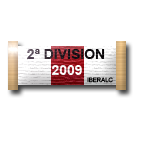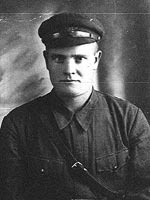Hola.
Los británicos/anglosajones usan varias expresiones para reflejar las tácticas de artillería. Me gustaría que pudiéramos hablar de esto para clarificar conceptos.
1) El bombardeo en alfombra lo llaman carpet bombardment y no es lo que yo pensaba que era exactamente. Es un bombardeo masivo, no progresivo, acumulando mucha concentración de fuego en una zona amplia o acotada. Básicamente se trata de "allanar" las defensas.
2) Creeping barrage. Esto es lo que yo entiendo como fuego progresivo, la artillería dispara delante de un avance de infantería, por ejemplo, para darle cobertura y evitar que el enemigo pueda montar una defensa contundente. ¿Cómo traduciríais este concepto en español? ¿Barrera de artillería progresiva?
3) Box barrage. Esto es un bombardeo, normalmente con coordenadas ya prefijadas, que forman una "caja" alrededor de un objetivo. Entiendo que puede servir para defender una unidad aislada (me viene a la cabeza una compañía de soldados americanos rodeado de una horda vietnamita). ¿Barrera de fuego de pantalla? ¿Cómo se llama el concepto en nuestro idioma? También se puede usar para fijar a una unidad enemiga, acosarla. Es un concepto complicado de traducir.
4) Standing barrage. Supongo que es un bombardeo de fijación, para clavar al enemigo con fuego concentrado. ¿Algún nombre concreto para definir este bombardeo en nuestro idioma?
Si se os ocurren más decídmelo pero estos en concreto me interesan.
Gracias
Tácticas de artillería moderna
- Haplo_Patryn
- Moderador

- Mensajes: 19297
- Registrado: 13 May 2003, 13:08
- STEAM: Jugador
- Ubicación: En mi casa
- Contactar:
-
Leta
- Moderador

- Mensajes: 7156
- Registrado: 01 Jul 2003, 09:41
- STEAM: Jugador
- Ubicación: En mi trinchera
Re: Tácticas de artillería moderna
El artículo de Artillería de la Wikipedia en inglés es completísimo.
http://en.wikipedia.org/wiki/Artillery
Allí te especifica estos tipos de fuego artillero según la OTAN:
Counterbattery fire: delivered for the purpose of destroying or neutralizing the enemy's fire support system.
Counterpreparation fire: intensive prearranged fire delivered when the imminence of the enemy attack is discovered.
Covering fire: used to protect troops when they are within range of enemy small arms.
Defensive fire: delivered by supporting units to assist and protect a unit engaged in a defensive action.
Final Protective Fire: an immediately available prearranged barrier of fire designed to impede enemy movement across defensive lines or areas.
Harassing fire: a random number of shells are fired at random intervals, without any pattern to it that the enemy can predict. This process is designed to hinder enemy forces' movement, and, by the constantly imposed stress, threat of losses and inability of enemy forces to relax or sleep, lowers their morale.
Interdiction fire: placed on an area or point to prevent the enemy from using the area or point.
Preparation fire: delivered before an attack to weaken the enemy position.
Según la posición del enemigo tienes:
Deep supporting fire: directed at objectives not in the immediate vicinity of own force, for neutralizing or destroying enemy reserves and weapons, and interfering with enemy command, supply, communications and observation.
Close supporting fire: placed on enemy troops, weapons or positions which, because of their proximity present the most immediate and serious threat to the supported unit.
Y según el resultado que quieres obtener:
Neutralization fire: delivered to render a target temporarily ineffective or unusable.
Suppression fire: that degrades the performance of a target below the level needed to fulfill its mission. Suppression is usually only effective for the duration of the fire.
http://en.wikipedia.org/wiki/Artillery
Allí te especifica estos tipos de fuego artillero según la OTAN:
Counterbattery fire: delivered for the purpose of destroying or neutralizing the enemy's fire support system.
Counterpreparation fire: intensive prearranged fire delivered when the imminence of the enemy attack is discovered.
Covering fire: used to protect troops when they are within range of enemy small arms.
Defensive fire: delivered by supporting units to assist and protect a unit engaged in a defensive action.
Final Protective Fire: an immediately available prearranged barrier of fire designed to impede enemy movement across defensive lines or areas.
Harassing fire: a random number of shells are fired at random intervals, without any pattern to it that the enemy can predict. This process is designed to hinder enemy forces' movement, and, by the constantly imposed stress, threat of losses and inability of enemy forces to relax or sleep, lowers their morale.
Interdiction fire: placed on an area or point to prevent the enemy from using the area or point.
Preparation fire: delivered before an attack to weaken the enemy position.
Según la posición del enemigo tienes:
Deep supporting fire: directed at objectives not in the immediate vicinity of own force, for neutralizing or destroying enemy reserves and weapons, and interfering with enemy command, supply, communications and observation.
Close supporting fire: placed on enemy troops, weapons or positions which, because of their proximity present the most immediate and serious threat to the supported unit.
Y según el resultado que quieres obtener:
Neutralization fire: delivered to render a target temporarily ineffective or unusable.
Suppression fire: that degrades the performance of a target below the level needed to fulfill its mission. Suppression is usually only effective for the duration of the fire.
Escucha el podcast de PDL !
http://www.ivoox.com/escuchar-audios-pdl-wargames_al_4216917_1.html
http://www.ivoox.com/escuchar-audios-pdl-wargames_al_4216917_1.html
- Matador_spa
- Support-PdL

- Mensajes: 1104
- Registrado: 09 Feb 2004, 00:37
- STEAM: Jugador
- Ubicación: Sanitario soy , donde cae un herido, allí voy....
Re: Tácticas de artillería moderna
Creo que a ese tipo de bombardeo se le llama "Fuego de acompañamiento"Haplo_Patryn escribió:
2) Creeping barrage. Esto es lo que yo entiendo como fuego progresivo, la artillería dispara delante de un avance de infantería, por ejemplo, para darle cobertura y evitar que el enemigo pueda montar una defensa contundente. ¿Cómo traduciríais este concepto en español? ¿Barrera de artillería progresiva?


- Warsage
- Support-PdL

- Mensajes: 957
- Registrado: 21 Abr 2012, 00:01
- STEAM: Jugador
- Ubicación: En el charco no.
Re: Tácticas de artillería moderna
En el libro La Gran Guerra 1914-1918: Historia militar de la Primera Guerra mundial (Crítica) de Peter Hart, el traductor usa la expresión "cortina de fuego móvil", y en un párrafo se cita su equivalente alemán Feuerwalze.Haplo_Patryn escribió: 2) Creeping barrage. Esto es lo que yo entiendo como fuego progresivo, la artillería dispara delante de un avance de infantería, por ejemplo, para darle cobertura y evitar que el enemigo pueda montar una defensa contundente. ¿Cómo traduciríais este concepto en español? ¿Barrera de artillería progresiva?
Saludos.
Las vallas nunca serán lo bastante altas si al otro lado hay hambre.







-
Panta
- Conscript - Obergefreiter

- Mensajes: 168
- Registrado: 10 May 2011, 20:27
- STEAM: No Jugador
- Ubicación: Montevideo, Uruguay
- Contactar:
Re: Tácticas de artillería moderna
No sé, yo en realidad solamente he leído y leo libros militares (manuales/táctica) en inglés y algunas de esas expresiones no las había visto nunca.
Al carpet bombing lo he visto utilizar para los bombardeos aéreos masivos a partir de la 2GM en adelante, por ejemplo por las B17 o B52.
Al creeping barrage lo conocía como rolling barrage y es el bombardeo que se utiliza delante de una unidad que avanza para irle abriendo camino, lo utilizaban mucho los soviéticos en la 2GM.
Al carpet bombing lo he visto utilizar para los bombardeos aéreos masivos a partir de la 2GM en adelante, por ejemplo por las B17 o B52.
Al creeping barrage lo conocía como rolling barrage y es el bombardeo que se utiliza delante de una unidad que avanza para irle abriendo camino, lo utilizaban mucho los soviéticos en la 2GM.
- Iberalc
- Veteran - Oberleutnant

- Mensajes: 1116
- Registrado: 18 Mar 2006, 15:46
- STEAM: No Jugador
- Ubicación: Con mi último cartucho...
Re: Tácticas de artillería moderna
Creeping barrage.
Se desarrolló en la 1ª GM por los británicos. La dificultad para coordinar el fuego de artillería hizo que se estableciera este sistema dónde el fuego de artillería iba avanzando digamos a 100 m. cada 3 minutos. La idea era que las fuerzas atacantes (infantería y más tarde tanques) se mantuvieran en su avance lo más próximos a la barrera para que los defensores no tuvieran tiempo de surgir desde refugios subterráneos cuando cesaba el bombardeo.
En la gran guerra muchos ataques fallaron o tuvieron muchas bajas debido a que las unidades atacantes no siempre podían seguir el ritmo de avance establecido para la barrera.
Lógicamente se utilizaba dentro de un plan de fuego artillero más amplio.
Se desarrolló en la 1ª GM por los británicos. La dificultad para coordinar el fuego de artillería hizo que se estableciera este sistema dónde el fuego de artillería iba avanzando digamos a 100 m. cada 3 minutos. La idea era que las fuerzas atacantes (infantería y más tarde tanques) se mantuvieran en su avance lo más próximos a la barrera para que los defensores no tuvieran tiempo de surgir desde refugios subterráneos cuando cesaba el bombardeo.
En la gran guerra muchos ataques fallaron o tuvieron muchas bajas debido a que las unidades atacantes no siempre podían seguir el ritmo de avance establecido para la barrera.
Lógicamente se utilizaba dentro de un plan de fuego artillero más amplio.







